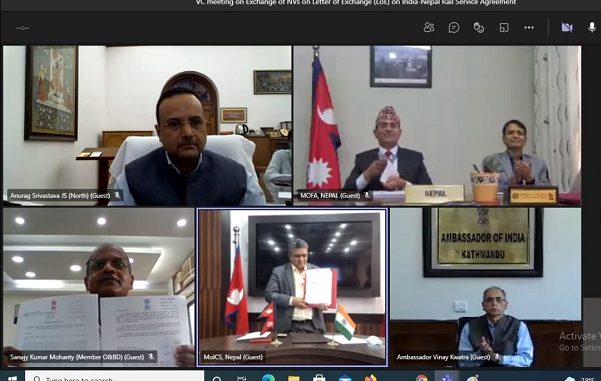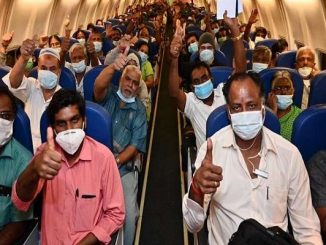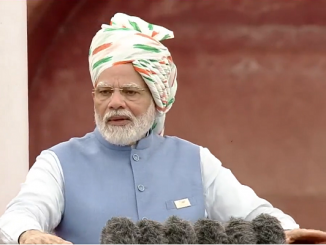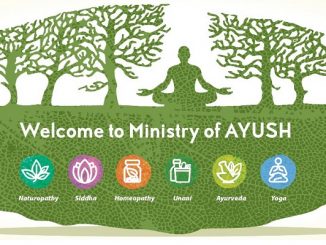
Jul 9: Rail Transportation between India & Nepal got a major boost today with coming into force of authorization to all cargo train operators to utilize the Indian railway network to carry all containers bound for Nepal whether bilateral freight between Indian and Nepal or third country freight from Indian ports to Nepal. This liberalization will allow market forces to come up in the rail freight segment in Nepal, and is likely to increase efficiency and cost- competitiveness, eventually benefiting the Nepalese consumer.
These cargo train Operators include public and private container trains Operators, automobile freight train operators, special freight train operators or any other operator authorized by Indian Railways .
It comes into effect from 09.07.2021 after the formal exchange of Note Verbales and signed copies of Letter of Exchange between officials of India & Nepal.
After this LoE, all kinds of cargoes in all categories of wagons that can carry freight on Indian Railways network within India can also carry freight to and from Nepal.
Move will reduce transportation costs for automobiles and certain other products whose carriage takes place in special wagons.
Wagons owned by Nepal Railway Company will also be authorized to carry Nepal-bound freight (inbound and outbound on Kolkata/Haldia to Biratnagar/Birganj routes) over the Indian Railways network as per IR standards and procedures.
The signing of this LoE marks annother milestone in India’s efforts to enhance regional connectivity under the “Neighbourhood First” policy.
From the Indian side, the ceremony was led by Shri Sanjay Kumar Mohanty, Member (Operations and Business Development), Ministry of Railways. From the Nepalese side, it was led by Shri Dinesh Bhattarai, Secretary, Ministry of Commerce, Industry and Supplies, Also present were representatives from Ministry of Railways, Embassy of India, Kathmandu, Northern Division, Ministry of External Affairs, India and South Asia Division of Nepalese Ministry of Foreign Affairs.
Background of Rail Services Agreement (RSA) – 2004 and LoE.
1. The Rail Services Agreement was executed on 21.05.2004 between Ministry of Railways, Government of India and Ministry of Industry, Commerce & Supplies (now Ministry of Commerce), His Majesty’s Government of Nepal (now Govt. of Nepal) for introduction of freight train services between these two countries to and from Birgunj (Nepal) via Raxaul (India). This is an agreement which guides movement between India and Nepal by rail. The rationale for this Agreement is that there was no rail movement prior to this between the two countries and hence a framework was required for operational and commercial aspects and procedure for customs clearances for rail bound cargo. Since then large various developments have taken place which require changes to the Rail Services Agreement.
2. There is a provision in Article 1.4 of the RSA that “the Agreement shall be reviewed every five years and may be modified by the Contracting Parties by mutual consent.
3 For effecting amendments in the relevant Articles to RSA, Letters of Exchange (LoE) are signed from both sides. In the past, there have been amendments to RSA through LoE on three occasions. First such amendment to RSA-2004 was effected through Letter of Exchange (LoE) signed on 21st May, 2004. Second LoE was signed on 17th December, 2008 at the time of introduction of bilateral cargo between the two countries which required introduction of new customs procedure and Third LoE was signed on 19/20.02.2016 enabling rail transit traffic to/from Vishakhapatnam Port in addition to existing provision of rail transportation through Kolkata/Haldia Port.
It may be noted that the current LoE has been finalized and signed on 28th June, 2021 by Govt. of Nepal which was acknowledged by Ministry of Railways (Govt. of India) by signing the LoE on 29.06.2021. It comes into effect from 09.07.2021 after the formal exchange of Note Verbales and signed copies of LoE.
Disclaimer: We donot claim that the images used as part of the news published are always owned by us. From time to time, we use images sourced as part of news or any related images or representations. Kindly take a look at our image usage policy on how we select the image that are used as part of the news.


